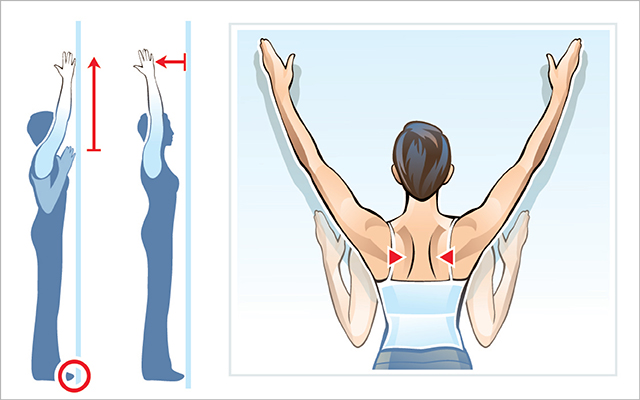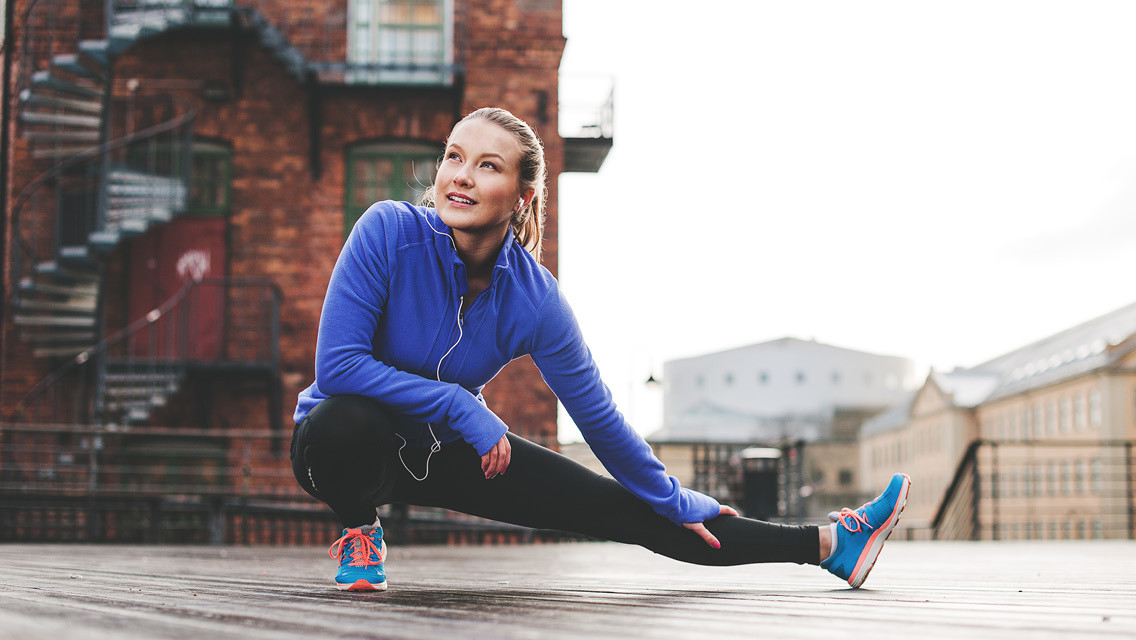Classic Flexibility-Builder
The original stretch is an oldie but a goodie. Despite research suggesting that static stretching temporarily reduces strength, most trainers still recommend this approach.
Why? Recent research, including a 2019 meta-review of past studies, indicates that any reduction in strength and power caused by short sessions of static stretching is minimal (less than 2 percent) and short-lived (10 minutes or less). So unless you’re preparing to compete in an athletic event requiring maximal strength and power (tennis or golf, for example), or trying to hit a personal record in a lift, light preworkout stretching should not be a problem.
In fact, the benefits of static stretching often depend on when you do it:
- Before your workout. If you’re about to perform an activity that requires a significant range of motion — a barbell squat, a tour jeté, or a high roundhouse kick, for example — static stretching associated muscles beforehand can be beneficial. For example, if you feel constriction through the hips, performing a hip-flexor stretch before squatting could help, says Rusin.
- After your workout. “Static stretching enhances the parasympathetic, or rest-and-digest, arm of the nervous system,” he notes. “That makes it great to use after exercise, when you’re trying to wind down rather than ramp up.” Postworkout, your muscles are also loose, warm, and engorged with blood — a perfect time to lengthen them with minimal risk of injury.
- Between workouts. Are there chronically tight areas of your body that don’t seem to relax no matter what you do? If so, it’s a good idea to stretch those areas on off days, during breaks at work, or before bed on workout days, holding the positions for up to five minutes each. Tight hip flexors, calves, pectorals, and glutes are common among desk workers, so stretch those areas regularly.
Whenever you do a static stretch, be specific about your alignment and focus, and be sure you’re stretching the right area: A few inches can mean the difference between an effective and an ineffective stretch.
Additionally, be prepared to spend some time in each stretch. “A pitfall with static stretching is that people don’t hold the stretch long enough to see any change,” explains Mike Thomson, CSCS, USATF, a Life Time personal trainer.
“Many people pull their arm across the body to stretch their triceps and lateral deltoid or grab their foot behind their body to stretch their quad — but hold it for only 10 to 20 seconds. That doesn’t do much to increase flexibility over time.” Aim for a minimum of one to two minutes in each static stretch.
And “static” doesn’t mean you should remain motionless. Instead, oscillate slightly in, out, and around the stretched position. Breathe deeply, Rusin advises, and try to settle farther into the stretch on each exhale.
“Small movements create more feedback from the nervous system.”
This was excerpted from “Stretch Your Fitness” which was published in the April 2021 issue of Experience Life magazine.





This Post Has 0 Comments